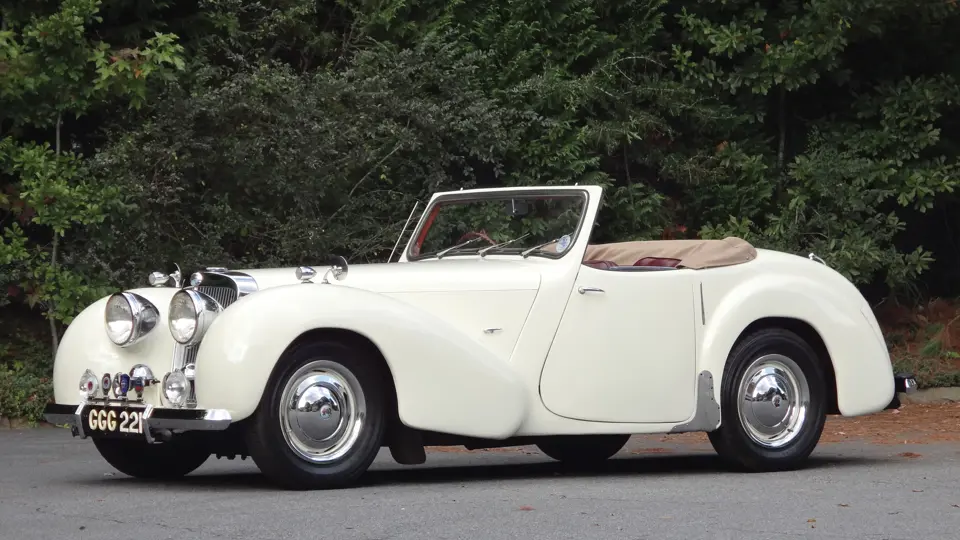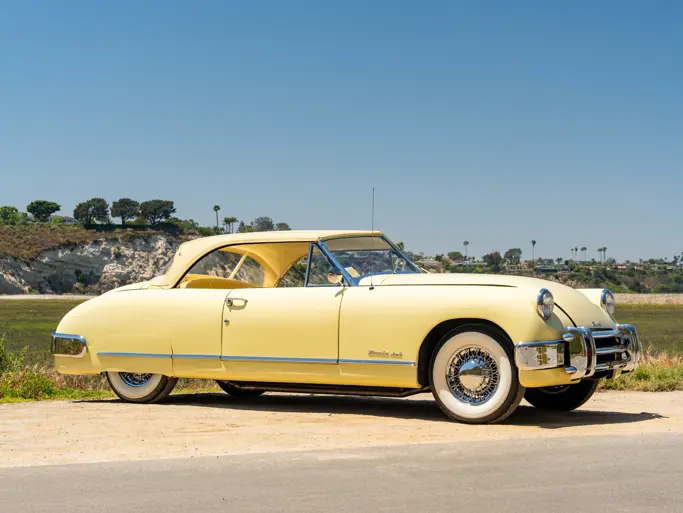This Triumph 2000 was built on March 30, 1949 and imported to the USA in 1958 by Ted Leonard, who owned a car dealership in Seekonk, Massachusetts. He sold the car to David Lee from Hartford, Connecticut on September 15, 1958. David Lee owned the car for 21 years and on one snowy night, when his daily driver Jeep would not start, he drove his wife to the hospital for the birth of their daughter in this very car.
He installed a 1958 TR3A engine with the appropriate four-speed floor-shift transmission to improve the drivability and as recommended by the international Triumph Roadster Club (TRCL). The car changed hands twice before it was bought by Fred West of Manchester, Vermont to be used as parts car for the restoration of another roadster.
Steve Cota from Lyme Pond Restorations, found the frame of the parts car to be better than the other and they decided to restore this car instead. From January 1999 through May 2001, the car underwent a no-cost-spared complete restoration. In May 2004, the car was sold to the United States secretary of the TRCL, Melvin Merzon. He proceeded to sell it to the current owner in June 2006.
In the last seven years and three months, this particular Triumph Roadster has remarkably won 82 awards. Of these, 30 were Best of Show, including the Triumph National Convention. An additional 28 were Best in Class and five times the Car of the Year Award from the International Triumph Roadster Club.
The origin of this model goes back to 1944, when Sir John Black, head of Standard Motors, attempted to buy Jaguar. Since Sir William Lyons refused the offer, Sir John decided to buy the brand name from Triumph, whose factory had been completely destroyed by the German Luftwaffe. During the last months of WWII, the development of a new sporty Triumph began. It was set to compete against the Jaguar MK IV.
Sir John wanted a roadster that allowed room for five, utilizing rumble seats – similar to pre-war features of some Triumphs. This forced the design to evolve into a mix of pre-war front and post-war rear, very similar to the Jaguar MK IV and MK V. This unusual Triumph was the last car produced with rumble seats and had a very unique fold-up second windshield for the rear passengers. The body was fabricated from aluminum, which made the car much lighter, more sportive and more fuel efficient than the Jaguar. Beside these advantages, aluminum doesn’t rust.
From 1946 to 1948, a 1,776-cc engine was used, which was also sold to Jaguar for their MK IV 1.5-liter. Triumph built 2,401 roadsters with this engine. In 1948, a new 2,088-cc was introduced with only three extra horsepower, but the engine supplied a lot of low-end torque and allowed the rare use of a three-speed column shift.
With the introduction of the Jaguar XK 120, after exactly 2,000 vehicles had been built, Triumph decided to end production of the Roadster. The limited success in the early post-war years resulted in about 600 surviving roadsters of both engine configurations, which makes the car less common than the Jaguar MK VI.



 | Fort Lauderdale, Florida
| Fort Lauderdale, Florida


